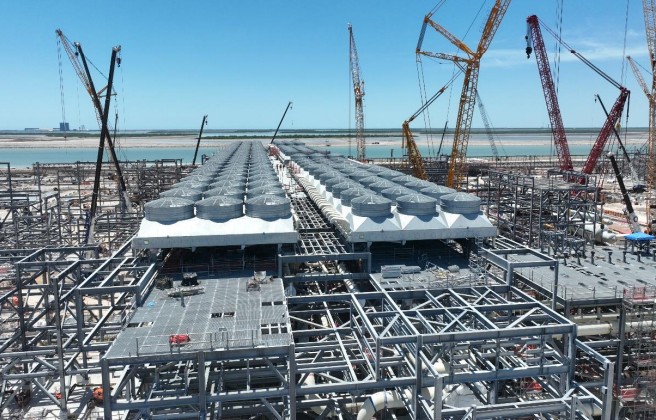This story requires a subscription
This includes a single user license.
FERC prepared the final supplemental environmental impact statement to address the August 6, 2024 opinion issued by the U.S. Court of Appeals for the District of Columbia Circuit regarding the Commission’s environmental review of the Rio Grande LNG terminal and Rio Bravo pipeline project.
In August 2024, the court issued an order vacating FERC’s remand authorization of NextDecade’s Rio Grande LNG facility and the pipeline, saying that FERC should have issued a supplemental EIS during its remand process.
In March, the court revised its August 2024 judgment against the Commission’s order for the first five liquefaction trains at the Rio Grande LNG facility.
After that, FERC released a draft supplemental environmental impact statement saying that it continues to conclude that approval of the project would result in “less than significant impact.”
Final SEIS conclusions
FERC said in its final SEIS on Thursday that project impacts on communities with environmental justice concerns would be “disproportionate and adverse because they would be predominately borne by the communities with environmental justice concerns identified and, specifically, communities in the areas near the Rio Grande LNG terminal may experience significant cumulative visual impacts.”
“Specific to air quality impacts, we clarify that the project’s air quality impacts on communities with environmental justice concerns would also be disproportionate and adverse,” the regulator said.
“However, RG LNG’s air quality analysis demonstrates that air quality impacts near the Rio Grande LNG terminal would not be significant, with the exception of two discrete areas just north of the LNG terminal where the cumulative model shows an exceedance of the annual PM2.5 SIL, and thus we conclude air quality impacts in those areas would be significant,” FERC said.
“Specific to the RB pipeline, the revised air quality dispersion modeling that shows that impacts from Compressor Station 1 would not exceed the NAAQS. Therefore, air quality impacts on communities with environmental justice concerns from operation of Compressor Station 1 would be less than significant,” it said.
“For all other resources, FERC staff continues to conclude that approval of the projects would result in less than significant impacts, with implementation of the environmental conditions set forth in the Commission’s prior authorizations for the project, and the additional mitigation measures recommended in the final supplemental EIS. Furthermore, staff does not recommend the CCS alternative,” the regulator said.
Rio Grande LNG
NextDecade is currently building three trains at the site located on the north shore of the Brownsville Ship Channel in south Texas.
In July 2023, NextDecade took the final investment decision on the first three Rio Grande LNG trains and completed a $18.4 billion project financing.
Phase 1, with a nameplate liquefaction capacity of 17.6 mtpa, has 16.2 mtpa of long-term binding LNG sale and purchase agreements.
Additionally, the firm closed a joint venture agreement for the first phase, which included approximately $5.9 billion in financial commitments from Global Infrastructure Partners (GIP), GIC, Mubadala, and TotalEnergies.
The deal also included options for the fourth and fifth trains.
NextDecade and compatriot Bechtel recently finalized EPC contracts worth $9.09 billion for the construction of the fourth and fifth trains and related infrastructure at the Rio Grande LNG facility.
In addition to these five trains, NextDecade announced plans in March to build up to five more trains at the Rio Grande LNG facility.
NextDecade said it is developing and beginning the permitting process for Trains 6 through 8.
The LNG terminal operator expects these trains to increase its total liquefaction capacity by approximately 18 mtpa once constructed and placed into operation.

